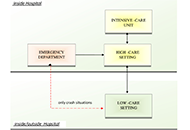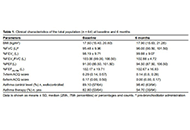Isolated lettuce allergy in a medical student: case report and review of the literature
Lettuce allergy is uncommon and usually attributed to lipid transfer protein (LTP) sensitization. Most LTP-sensitized patients present with heterogeneous symptoms not only to lettuce, but to a large
[...] Read more.
Lettuce allergy is uncommon and usually attributed to lipid transfer protein (LTP) sensitization. Most LTP-sensitized patients present with heterogeneous symptoms not only to lettuce, but to a large number of other foods and pollen allergens, including peaches, apples, Platanus, and mugwort, with peach LTP being considered as the primary sensitizer. The case of a medical student with a history of lettuce allergy investigated by skin prick tests (SPTs) and oral food challenge (OFC) is presented in this report. SPTs showed sensitization exclusively to lettuce and not to any other known cross-reacting allergens, which contrasts with previous literature and highlights the uniqueness of this case. During OFC, the patient developed generalized symptoms including abdominal discomfort, bilateral tinnitus, facial flushing, generalized itching, and urticaria. No cardiopulmonary compromise was observed at the time, and the reaction was managed with oral antihistamines. More sophisticated molecular analysis is required to identify the patient’s sensitization profile; however, SPTs and OFCs remain the most practical clinical approach. Lettuce allergy deserves further attention and investigation.
Kyle Alexander ... Nicolaos Nicolaou
View:4565
Download:34
Times Cited: 0
Lettuce allergy is uncommon and usually attributed to lipid transfer protein (LTP) sensitization. Most LTP-sensitized patients present with heterogeneous symptoms not only to lettuce, but to a large number of other foods and pollen allergens, including peaches, apples, Platanus, and mugwort, with peach LTP being considered as the primary sensitizer. The case of a medical student with a history of lettuce allergy investigated by skin prick tests (SPTs) and oral food challenge (OFC) is presented in this report. SPTs showed sensitization exclusively to lettuce and not to any other known cross-reacting allergens, which contrasts with previous literature and highlights the uniqueness of this case. During OFC, the patient developed generalized symptoms including abdominal discomfort, bilateral tinnitus, facial flushing, generalized itching, and urticaria. No cardiopulmonary compromise was observed at the time, and the reaction was managed with oral antihistamines. More sophisticated molecular analysis is required to identify the patient’s sensitization profile; however, SPTs and OFCs remain the most practical clinical approach. Lettuce allergy deserves further attention and investigation.
 Allergists/immunologists facing the coronavirus disease 2019 pandemic: the experience of managing a low-care settingOpen AccessLetter to the EditorCoronavirus disease 2019 (COVID-19) pandemic was a great challenge for healthcare professionals globally and also for allergists/immunologists. The Pegaso low-care COVID center's experien [...] Read more.Laura Franceschini ... Alessandro FarsiPublished: April 27, 2023 Explor Asthma Allergy. 2023;1:28–30
Allergists/immunologists facing the coronavirus disease 2019 pandemic: the experience of managing a low-care settingOpen AccessLetter to the EditorCoronavirus disease 2019 (COVID-19) pandemic was a great challenge for healthcare professionals globally and also for allergists/immunologists. The Pegaso low-care COVID center's experien [...] Read more.Laura Franceschini ... Alessandro FarsiPublished: April 27, 2023 Explor Asthma Allergy. 2023;1:28–30 Isolated lettuce allergy in a medical student: case report and review of the literatureOpen AccessCase ReportLettuce allergy is uncommon and usually attributed to lipid transfer protein (LTP) sensitization. Most LTP-sensitized patients present with heterogeneous symptoms not only to lettuce, but to a large [...] Read more.Kyle Alexander ... Nicolaos NicolaouPublished: April 26, 2023 Explor Asthma Allergy. 2023;1:20–27
Isolated lettuce allergy in a medical student: case report and review of the literatureOpen AccessCase ReportLettuce allergy is uncommon and usually attributed to lipid transfer protein (LTP) sensitization. Most LTP-sensitized patients present with heterogeneous symptoms not only to lettuce, but to a large [...] Read more.Kyle Alexander ... Nicolaos NicolaouPublished: April 26, 2023 Explor Asthma Allergy. 2023;1:20–27 An exploratory study on the validity and reliability of the Greek translation of Juniper’s Asthma Control Questionnaire in pediatric patients in GreeceOpen AccessOriginal ArticleAim: Evaluation of asthma control is the first step in the management of pediatric patient symptoms. The aim of this study was to a) validate the accuracy of the Greek version of the Asthma Contr [...] Read more.Maria M. Papamichael ... Bircan ErbasPublished: April 23, 2023 Explor Asthma Allergy. 2023;1:11–19
An exploratory study on the validity and reliability of the Greek translation of Juniper’s Asthma Control Questionnaire in pediatric patients in GreeceOpen AccessOriginal ArticleAim: Evaluation of asthma control is the first step in the management of pediatric patient symptoms. The aim of this study was to a) validate the accuracy of the Greek version of the Asthma Contr [...] Read more.Maria M. Papamichael ... Bircan ErbasPublished: April 23, 2023 Explor Asthma Allergy. 2023;1:11–19 TSLP and asthma: fellow travelersOpen AccessMini ReviewThe incidence of asthma, a heterogeneous inflammatory disease affecting over 300 million people worldwide, continues to increase in developed countries. Human epithelial cells (ECs) express the alar [...] Read more.David El-Qutob, Antonio LetranPublished: April 14, 2023 Explor Asthma Allergy. 2023;1:4–10
TSLP and asthma: fellow travelersOpen AccessMini ReviewThe incidence of asthma, a heterogeneous inflammatory disease affecting over 300 million people worldwide, continues to increase in developed countries. Human epithelial cells (ECs) express the alar [...] Read more.David El-Qutob, Antonio LetranPublished: April 14, 2023 Explor Asthma Allergy. 2023;1:4–10 Exploration of Asthma & Allergy, where science, evidence, and vision can improve clinical practiceOpen AccessEditorialGiorgio Walter Canonica, Enrico HefflerPublished: March 01, 2023 Explor Asthma Allergy. 2023;1:1–3
Exploration of Asthma & Allergy, where science, evidence, and vision can improve clinical practiceOpen AccessEditorialGiorgio Walter Canonica, Enrico HefflerPublished: March 01, 2023 Explor Asthma Allergy. 2023;1:1–3